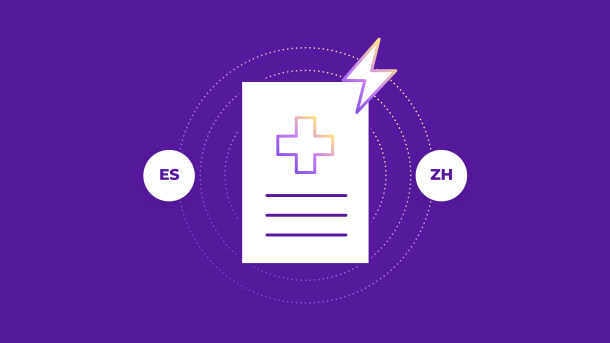Do your translation projects tend to look like this?
- Your marketing team writes content and submits it to your translation team or agency.
- Your design team provides the layout and images or creates the UI for the feature or application page.
- Your development team uploads content or codes the product pages in English or the source language.
- The translation service then emails back to your team the hard-to-use spreadsheets with the final translations, with each tab a different language ...
- …and then the translations immediately break the design, requiring more time to re-do it by manually importing each string back into the code.
- Then, the process starts again with re-translation requests as needed after already re-doing the work.
Does this process sound exhausting? There’s a better way. No one person has to go through each step alone. With the right technology, you can engage in collaborative translation. Here’s everything you need to know:
What is collaborative translation?
Collaborative translation is a translation workflow methodology that brings together an entire team of translators, project managers, designers, and developers to translate a given piece of content from a source language to a target language.
Imagine your marketing team without project management tools like Trello or your engineering team without an organization tool like JIRA.
That’s what localization looks like without a translation management tool.
Thank goodness we’ve arrived in the digital age. Next-generation translation management software (TMS) like Smartling facilitates collaborative translation practices by making it easier for all collaborators to provide source material, context, and quality assurance without juggling multiple spreadsheets.
What about crowdsourcing?
This technique is often confused with community translation. Crowdsourcing is when companies put out an open call for freelance translators for a translation project, helping it to reduce cost and speed up the process.
Databases like Wikipedia famously pioneered translation crowdsourcing to complete their pages in multiple languages. This often means low-cost or volunteer translation efforts with little to no quality assurance. However, with crowdsourcing, these projects are completed more quickly—which is why tech companies like YouTube, Facebook, and the magazine Wired have all used it.
Internally, this might look like polling a few multilingual employees to ask their opinion or quickly translate a piece of content. However, this is not a reliable, long-term solution for any company looking to expand globally. Why?
Most companies lose money on global expansion, and only 40% of companies turned in more than 3% return. That’s because they expand so quickly they ignore what their international customers need.
75% of consumers are more likely to choose the product available in a language they understand. Investing long-term in professional translation is essential as you look to expand your business — so you can actually achieve ROI.
5 benefits of collaborative translation
Collaborative translation should mean working together as a team to complete a localization project on time and on budget.
Rather than treating translators as external vendors, consider pulling them in to be a part of the process. This builds trust and speed long-term. Active collaboration with translators through TMS tools like Smartling sets your localization projects up for success. Here’s how:
1. Accelerate with a continuous localization process
With collaborative translation, you can more easily enable a continuous localization process (sometimes called agile localization) that allows your team to consistently release new content, features, and products without worrying about missing deadlines or re-doing work.
Here’s how it works:
- Smartling automatically integrates with your content management system (CMS). Any updates or new content are automatically parsed into strings and sent to a translator in a new translation task.
- Your assigned translators work on the task, tracking their progress and communicating directly with you throughout the process in case there are any questions.
- When the translations are all set, they automatically go back into your CMS, and you click Publish.
Much easier, right?
2. Receive high-quality translations from your translation team
The more you collaborate with your team of translators, the easier it is for them to deliver high-quality translations.
Translators require context to craft a translation that makes sense for your written content. For instance, the word “Add” or “Added”—as in the common eCommerce phrase “Add to cart”—can require a completely different word or phrase depending on the rest of the sentence.
In a gendered language like French or Spanish, the word could have eight different translations depending on whether the subject is singular, plural, masculine, or feminine. Talk about complicated!
The better translators know you and your team, the more likely they’ll be able to determine the missing pieces on important factors like existing design limitations, tone, or feeling that determine the best translation path to take.
Translation technology often offers features that address this, like Smartling’s Visual Context, which gives translators a direct view of the content they are working on. As translators begin their work and input translations, Smartling will auto-generate those translations within the existing design, eliminating guesswork for your design team and giving you higher-quality translations overall.
Since translators can see exactly how their translations will impact that design in real-time, they can more easily craft the right translation for the piece or alert designers to any changes as needed.
3. Integrate your localization process seamlessly with collaboration tools
Translations are a work-in-progress, and your translators might have questions as they move along in the process. Collaborative features allow you to clearly note issues, explain workarounds, or provide specific feedback on sentences, terms, or phrases.
That’s why at Smartling, you’ll get to know your translators via messaging tools like Slack—not only so you can provide feedback more efficiently, but also so they get to know your brand and messaging. The more familiar they are with your products and services, the better off your translations will be.
Slack + Smartling makes it possible to streamline communications between your organization and linguists into one or more Slack channels based on the Smartling project and language pair. It’s the fastest, most transparent way to speak directly with translators.
4. Customize your translation workflow
Every company has different translation needs, and even the most collaborative workflow requires customization based on the type of asset translated and foreign languages you’re working with.
For example, if you translate legal policies with the same workflow you use for blog posts, that’s not only inefficient, but you’re also likely to introduce errors on both ends.
Collaborative translation empowers you to work with your translators to ensure your content is properly translated with the right amount of feedback cycles and quality assurance. That way, your team doesn’t waste time on low-value tasks or moves too quickly on high-value ones. You can also strategically add or remove subject matter experts, internal reviewers, and in-country consultants as needed.
5. Build a transparent translation process
Collaborative translation tools like Smartling make the entire process much more transparent for your stakeholders. Document all feedback, along with your translation memory, in a centrally available database right in the tool.
That way, anytime a new project manager or translator joins the team, they can easily see past projects, access the library of saved translations, and get up to speed quickly on your brand and messaging. This gives you the ability to combine the power of machine translation and human translation—the speed of machine translation with the accuracy and nuances of what professional translators can offer.
With a centralized database of feedback, creative briefs, and updates on all projects in flight, you’ll be able to move localization projects forward easily and answer any questions as needed.
Try Smartling’s online collaborative translation features
Smartling works with a global network of translators who specialize in making sure your translations are not only accurate but that they also align with your messaging. Smartling ensures that the translations sound like they were written in the original language.
Smartling’s collaborative translation platform makes it happen. Learn more about Smartling’s translation services here.


.jpg)



